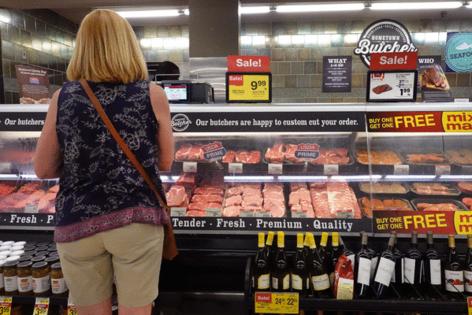Where's the beef ceiling? Demand rising even at record prices
Published in Business News
Typically, when some product becomes too expensive, people buy less of it.
Not so with beef. Despite record high prices for the red meat — thanks to a record low number of cattle raised for slaughter — demand for the fresh protein keeps rising.
Folks are more interested in a Jucy Lucy than following the law of supply and demand, it seems.
A recent report from CoBank said the “remarkably steady allure of beef, even at current prices” stems from “heightened interest in dietary protein, changing health perceptions surrounding beef and the availability of restaurant-quality beef at retail grocery stores.”
The ag-lending cooperative found beef demand is at the highest level this century even as average fresh beef prices across all cuts have hit a record $8.90 per pound nationally, 9% above prices last summer.
Brian Earnest, CoBank’s lead animal protein economist, wrote budget-conscious grocery shoppers are looking for cheaper cuts or more ground beef instead of the more spendy steaks. But that helped push ground beef prices to a record of $6.25 per pound in July.
A pound of ground ran around $3.80 before the pandemic, according to the Bureau of Labor Statistics.
“This consumer pressure on ground beef supply has contributed to tighter availability and interest from other top-producing nations,” Earnest wrote.
On the demand side, it’s similar to the high egg prices conundrum: If consumers bought fewer cartons when eggs were hitting records this spring, prices might have come down faster.
But the inelasticity — a term for the willingness of consumers to accept price increases for goods they consider necessities — means there might be more records set for beef prices in the months and years to come.
“While larger macroeconomic shifts could influence purchasing behavior in the future, so far, consumers have shown little appetite for sacrificing beef,” according to CoBank.
On the supply side, the U.S. beef herd is at a 75-year low, and slaughter rates are dropping. Imports, especially from Brazil, are incurring higher tariffs.
“Most observers suggest the nation’s cattle supply will remain strained through at least 2026 and likely through 2027,” CoBank’s report found. “That means retail beef prices will remain elevated for the foreseeable future.”
One winner in all this: Ranchers. Drought and poor forage conditions in some areas made for a few lean years, but they’re now lassoing a good bounty for their bovines.
©2025 The Minnesota Star Tribune. Visit at startribune.com. Distributed by Tribune Content Agency, LLC.












Comments